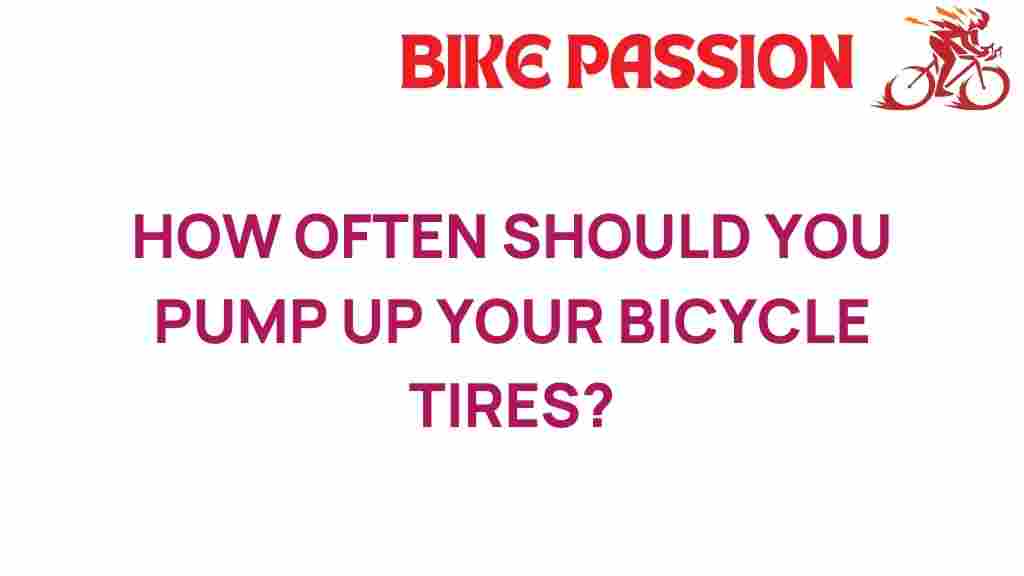The Tire Dilemma: How Often Should You Pump Up Your Bicycle Tires?
When it comes to cycling, one of the most critical aspects of bike maintenance is ensuring that your bicycle tires are properly inflated. Proper tire pressure not only affects your bike’s performance but also plays a significant role in bike safety and comfort during rides. In this article, we will dive into the bicycle tires dilemma, exploring how often you should pump up your tires, the importance of maintaining the right tire pressure, and practical cycling tips to help you avoid flat tires.
The Importance of Tire Pressure
Maintaining the correct tire pressure for your bicycle tires is essential for several reasons:
- Safety: Under-inflated tires can lead to decreased traction and an increased risk of accidents.
- Performance: Properly inflated tires reduce rolling resistance, allowing you to ride faster and with less effort.
- Comfort: Correct tire pressure absorbs shocks better, providing a smoother ride.
- Prevent Flat Tires: Tires with low pressure are more susceptible to pinch flats and punctures.
How Often Should You Check Your Tire Pressure?
So, how often should you pump up your bicycle tires? The answer depends on several factors, including the type of bicycle you have, the type of tires, and how often you ride. Here’s a general guideline:
- Road Bikes: Check your bicycle tires before every ride, as road bike tires typically lose air more quickly.
- Mountain Bikes: Inspect tire pressure at least once a week, especially if you ride on rough terrain.
- Hybrid Bikes: A good practice is to check your tire pressure every two weeks.
Keep in mind that environmental factors such as temperature changes can affect tire inflation. A drop in temperature can lead to lower tire pressure, so it’s essential to check them regularly.
Step-by-Step Process for Checking and Inflating Bicycle Tires
Now that you understand the importance of tire pressure, let’s go through a step-by-step process for checking and inflating your bicycle tires:
Step 1: Gather Your Tools
You’ll need the following tools:
- A reliable tire pressure gauge
- A pump (preferably one that is compatible with your tire type)
- Optional: A CO2 inflator for quick inflation on the go.
Step 2: Check the Current Tire Pressure
Follow these steps to check your tire pressure:
- Remove the valve cap from the tire valve.
- Press your tire pressure gauge onto the valve to get a reading.
- Compare the reading with the recommended pressure, which can usually be found on the sidewall of the tire.
Step 3: Inflate Your Tires
If your bicycle tires are under-inflated, here’s how to add air:
- Attach the pump head to the tire valve.
- Inflate the tire to the recommended pressure.
- Remove the pump and quickly replace the valve cap to prevent air loss.
Step 4: Recheck the Pressure
After inflating, it’s a good idea to double-check the tire pressure to ensure it matches the recommended levels.
Step 5: Regular Maintenance
Make checking tire pressure a routine part of your cycling maintenance. Setting a schedule (weekly or biweekly) can help you avoid potential issues.
Troubleshooting Common Tire Issues
Sometimes, despite your best efforts, you may encounter issues with your bicycle tires. Here are some common problems and how to troubleshoot them:
1. Flat Tires
Flat tires are a cyclist’s nightmare. If you encounter a flat, follow these steps:
- Inspect the tire for punctures or debris.
- Check the inner tube for leaks by submerging it in water and looking for bubbles.
- Patch or replace the inner tube as necessary.
2. Frequent Air Loss
If you find you’re frequently pumping up your tires, it may indicate a problem:
- Check for small punctures or leaks.
- Inspect the valve to ensure it’s not damaged or loose.
- Consider replacing the inner tube if it’s old or worn out.
3. Uneven Wear on Tires
Uneven tire wear can lead to poor handling and safety issues. To troubleshoot:
- Check if the tires are properly inflated.
- Ensure the bike is correctly aligned and the wheels are straight.
- Rotate your tires regularly for even wear.
Additional Cycling Tips for Tire Maintenance
To keep your bicycle tires in optimal condition, consider these additional cycling tips:
- Invest in Quality Tires: High-quality tires may initially cost more but can save you from frequent flat tires and maintenance.
- Use a Floor Pump: A floor pump with a gauge provides more accurate inflation than a hand pump.
- Carry a Repair Kit: Always have a basic repair kit on hand, including tire levers, a spare tube, and a mini-pump.
- Keep an Eye on Tread: Inspect your tires regularly for signs of wear and replace them as needed.
For more on cycling gear and safety tips, you can check out this helpful resource on cycling maintenance.
Conclusion
Maintaining the right tire pressure in your bicycle tires is crucial for ensuring a safe and enjoyable ride. By following the guidelines and tips outlined in this article, you can minimize the risk of flat tires and enhance your bike performance. Remember, regular checks and proper inflation can make all the difference in your cycling experience.
So, before you head out for your next ride, take a moment to check your tire pressure and ensure your cycling gear is in top shape. Happy cycling!
This article is in the category Maintenance and created by BikePassion Team
